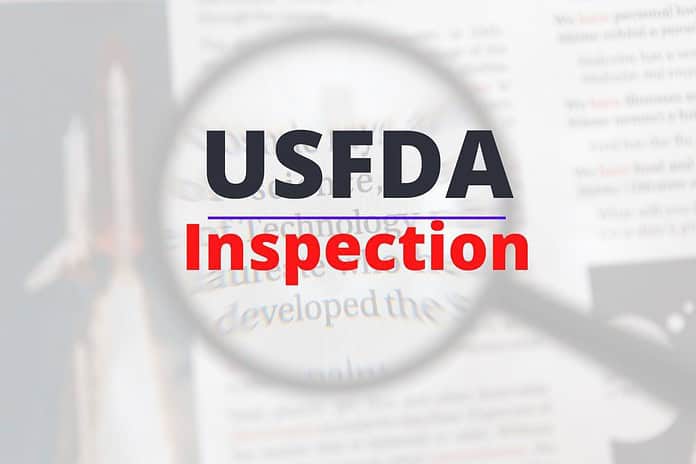Last Updated on October 11, 2024 by The Health Master
Inspections by USFDA
The Indian pharmaceutical industry has called for enhanced transparency and efficiency in Good Manufacturing Practices (GMP) inspections, urging the U.S. Food and Drugs Administration (USFDA) to reconsider the multiple levels of inspections that cause significant delays in market approvals.
The Need for Harmonization of GMP Standards
In a bid to improve market approval timelines and establish mutual recognition agreements (MRA) with the United States (US), stakeholders in the Indian pharma industry propose harmonizing GMP and other compliance standards with global norms.
According to a senior industry official, achieving a comprehensive MRA with the US is challenging due to the varying GMP standards followed in India.
Therefore, the first step towards progress should be the alignment of Indian GMP regulations with international benchmarks, enabling India to negotiate for an MRA in the future.
Reducing Redundant Inspections for Indian Drug Manufacturers
A regulatory official emphasizes the elimination of redundant site inspections for GMP compliance when Indian drug manufacturers have already received GMP recognition in a third-party reference country.
This move aims to streamline the inspection process and reduce unnecessary delays in market approvals.
Understanding the Different Types of USFDA Inspections
The USFDA conducts various types of on-site inspections to ensure compliance with GMP regulations.
These inspections include:
1. Pre-Approval Inspections:
- Conducted for market authorization approval in several scenarios, including:
- First-time facility mention in an application
- First application by the applicant
- First ANDA for an approved drug
- New molecular entity or narrow therapeutic range drug
- New manufacturing process or dosage form for the facility
- High-risk API (Active Pharmaceutical Ingredient)
- ‘Official action indicated’ status or no recent inspection
- Drugs that are difficult to manufacture
- Based on compliance record and recent inspections
- Other supply chain risks
2. Post-Approval Inspections (Product-Specific Inspections):
- Conducted after product approval to evaluate:
- Commercial-scale processes
- Process validation lifecycle
- Manufacturing changes
- Changes in perceived product risks
3. Surveillance Inspections:
- Conducted based on various factors, including:
- Compliance history of the establishment
- Records linked to the establishment
- Inherent risk of the drug manufactured or processed at the establishment
- Inspection frequency of the establishment
- Inspection by a foreign government
- Patent exposure
- Hazard signals, import alerts, or warning letters
4. For-Cause Inspections:
- Conducted in response to specific incidents or communications, such as:
- Recalls
- Outbreaks
- Information from whistle-blowers
The Role of Form 483 in GMP Compliance Inspections
Upon detecting potential violations of USFDA norms during an inspection, investigators issue a Form 483 to the firm’s management.
This form notifies the company’s management of objectionable conditions identified during the inspection.
It is essential to note that Form 483 is not a final determination of a violation but is considered alongside the responses provided by the manufacturing company when making the final determination.
Recent Instances of Indian Companies Receiving Form 483
In 2022, at least five Indian pharmaceutical companies were issued Form 483 by the USFDA, indicating areas of concern regarding GMP compliance.
This further highlights the importance of enhancing transparency and improving inspection processes to ensure smooth market approvals.
Conclusion
The Indian pharma industry’s call for increased transparency and streamlined GMP inspections aligns with the goal of expediting market approvals.
Harmonizing GMP standards with global norms and eliminating redundant inspections can pave the way for potential mutual recognition agreements with the US in the future.
By understanding the different types of USFDA inspections and their purposes, the industry can proactively address compliance issues and bolster its reputation on the international stage.
Disclaimer: This article contains information derived from Pharmabiz. Our team utilized an AI language model, to rewrite and present the news / article in a unique format.
Licensing procedure for manufacturing of Drugs
Procedure to obtain License to Manufacture drugs for testing and analysis purposes
Forms: All types of Clinical Trials
Schedules: All types of Clinical Trials
Latest Notifications regarding Pharmaceuticals
Latest Notifications: D&C Act 1940
Latest Notifications: D&C Rules 1945
Latest Notifications: Banned Drugs
Latest Notifications: NDPS Act
Latest notifications – DPCO / NPPA
Latest Notifications: New Drugs and Clinical Trials
Govt asks Medical Stores not to sell painkillers without prescription: Delhi
DCGI plans unified Online Portal for Drug Quality and Patient Safety
Committee asks USFDA to submit details on inspection of Pharma Companies in India and China
AHUs, Air Types, Air Changes and their Functions in Pharma Industry
Third Phase of Risk Based Inspections on Pharma Companies concluded: Gujarat
Pharmacy Council appoints four Pharmacy Inspectors: Karnataka
USFDA approves this drug to prevent RSV in babies and toddlers
Drug alert: DCGI issues drug alert on usage of cough and cold medicine
Govt Job: for the post of Director at CDTL – Central Drugs Testing Laboratory
Pharma Industry urges Govt to authorize Private labs to test cough syrups








